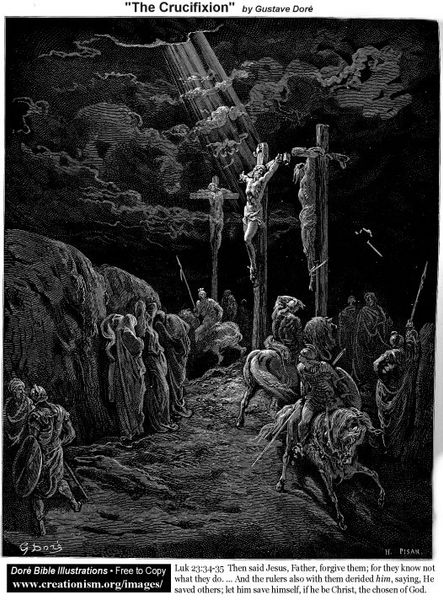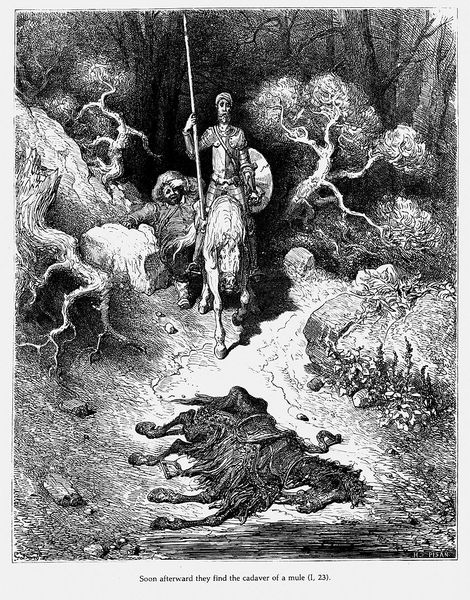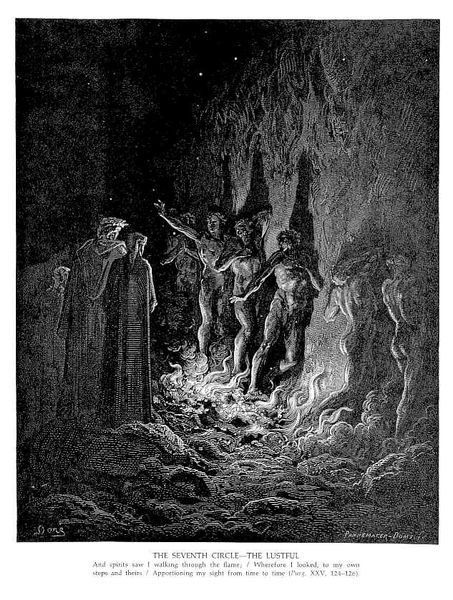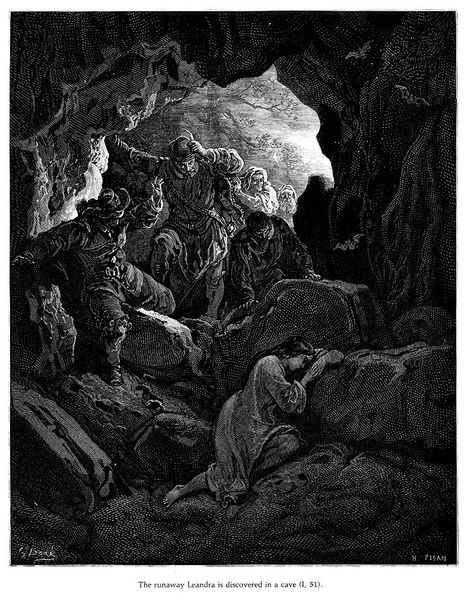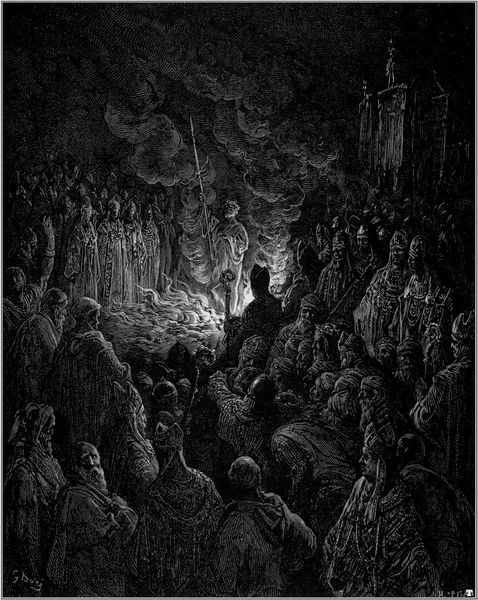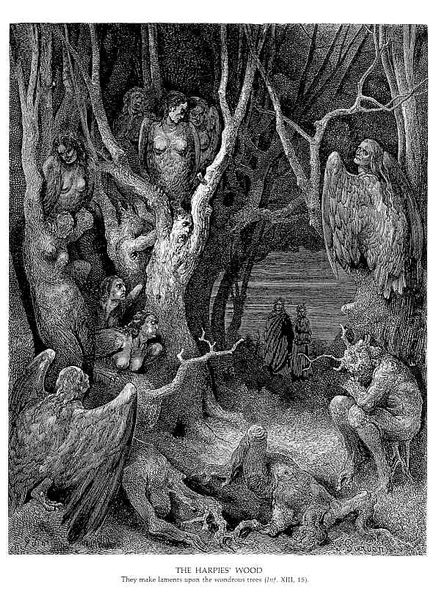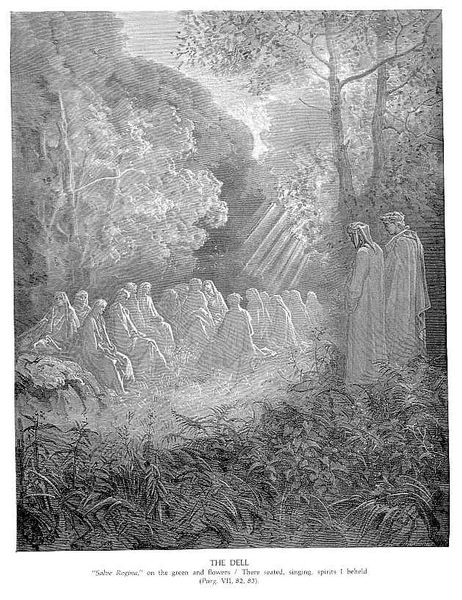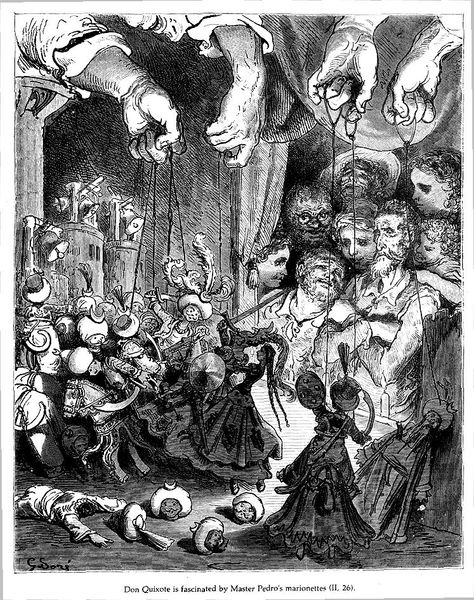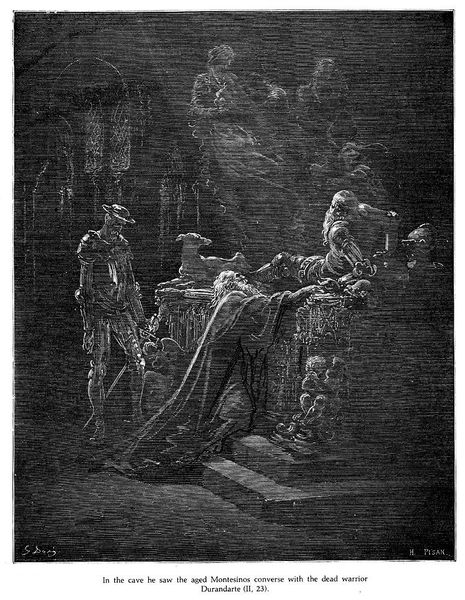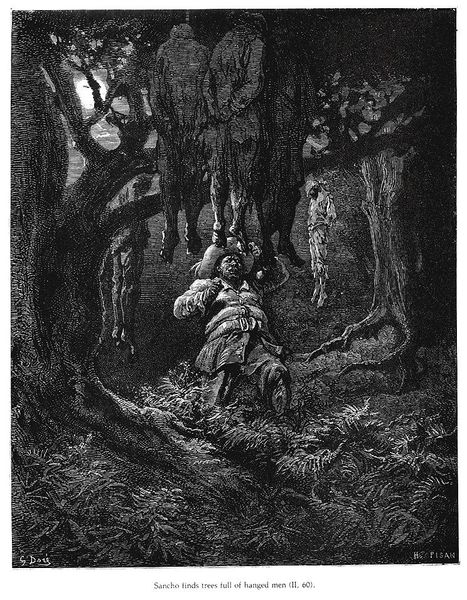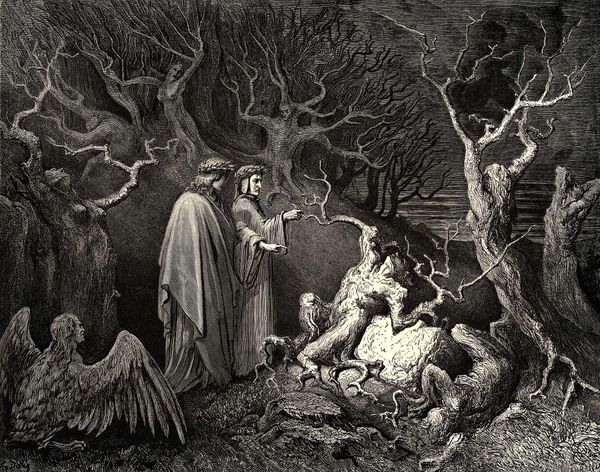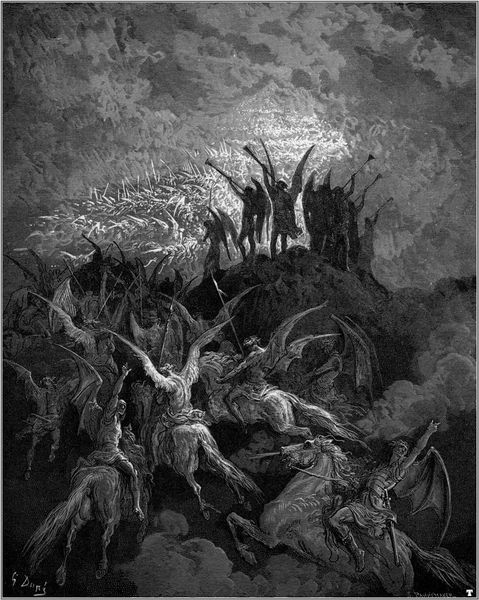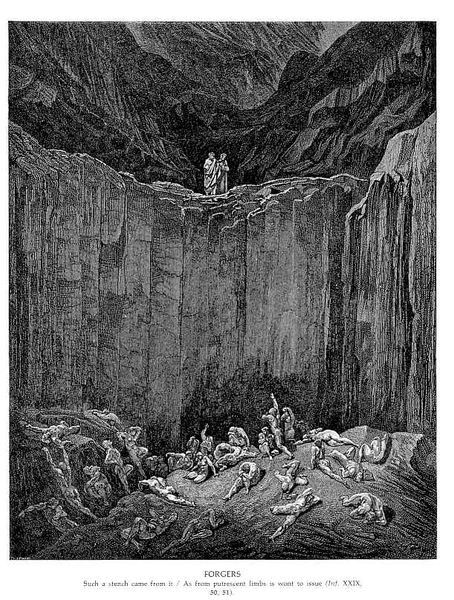
drawing, print, photography, pen, engraving
#
drawing
#
narrative-art
#
animal
# print
#
landscape
#
figuration
#
photography
#
romanticism
#
black and white
#
horse
#
pen
#
engraving
Copyright: Public domain
Editor: This is "Don Quixote," a drawing, possibly an engraving or a print, by Gustave Doré. It’s incredibly detailed, all in black and white. The scene has a really eerie feeling, with a crowd gathered in what looks like a forest. There's something theatrical about it. What stands out to you about this piece? Curator: The composition, theatrics, and use of black and white here certainly reflect the 19th-century fascination with Romanticism, which heavily influenced Doré. Beyond that, the subject matter tells us about the perceived role and relevance of visual art in the understanding of, and reflection upon, dominant social texts. Do you have any insight into the choice to represent this particular moment in the novel? Editor: From the inscription on the work it looks as if this shows the character Merlin revealing a way for Don Quixote to "disenchant" his love, Dulcinea. I assume this part was meaningful in some way. Is this image meant to act as a straightforward illustration of the novel, or something more? Curator: Well, let's consider the public role of such images. Doré's illustrations for "Don Quixote" weren't just passive reflections; they actively shaped the visual understanding of Cervantes's work for a broad audience. These images were widely disseminated, impacting how people perceived the characters and narratives. Is it fair to say Doré's illustrations became integral to the popular interpretation of the novel? Editor: Absolutely. It's fascinating how an image can solidify a reader's understanding. So the artist really is making meaning. I hadn't considered the social influence of his illustration beyond the literary canon. Curator: Indeed. Furthermore, remember that the politics of imagery extends to who gets to create and disseminate these representations. Doré's interpretations became dominant, perhaps overshadowing other possible readings of Cervantes. Do you think the image has supplanted the original intent? Editor: This conversation has definitely given me a new appreciation for how illustrations shape culture! Curator: And it highlights the crucial role of historical and social context in understanding the lasting impact of an artwork.
Comments
No comments
Be the first to comment and join the conversation on the ultimate creative platform.
